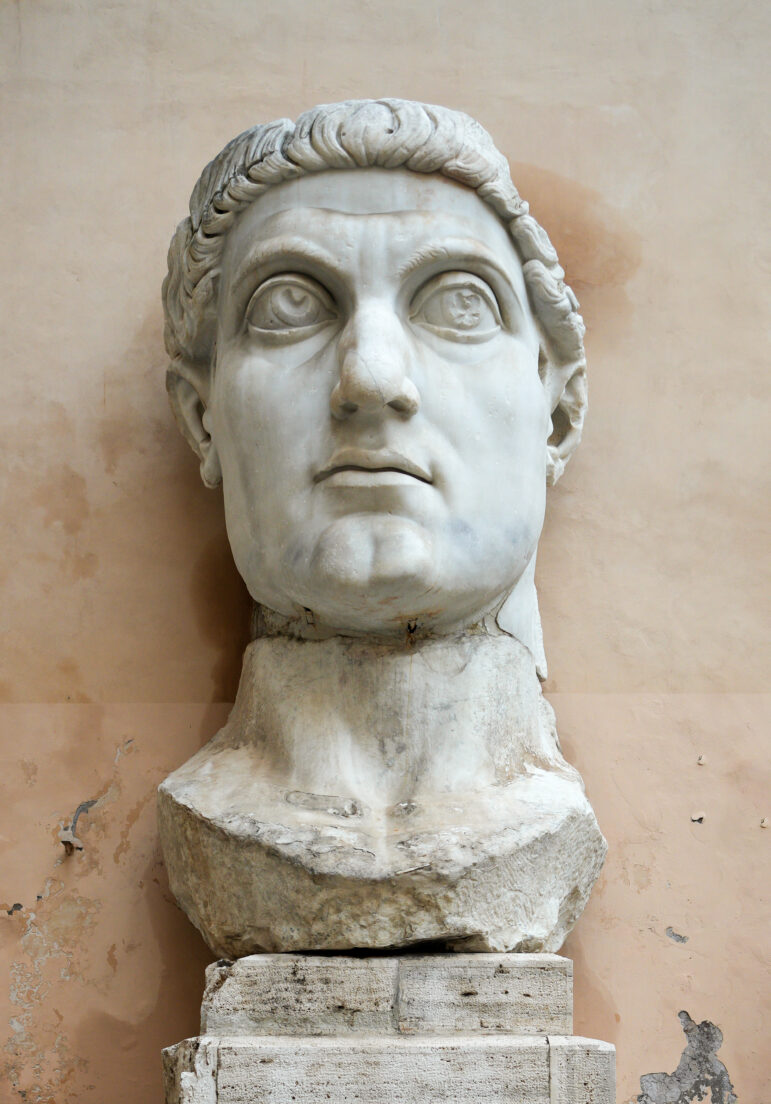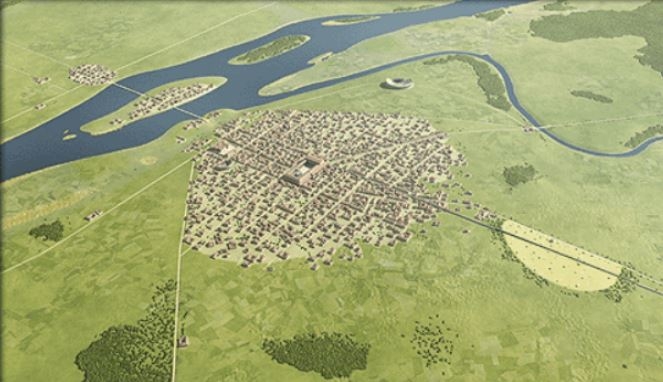
In April of 2023, the Smithsonian Magazine reported that archaeologists had found fifty burials from the second century, during the Gallo-Roman period while excavating for a train station expansion. They had found the Saint-Jacques Necropolis where ancestors of modern Parisians buried their dead in this necropolis. The site is now near the Abbey of Port Royal southwest of Notre Dame de Paris.
Institut national de echerches archéologiques préventives (INRAP) reported that excavators found no evidence of any organization of the graves. Burials often overlapped though they did find a high density of graves in the area excavated. The graves had the remains of both children and adults and the items found with the burials indicate they were Gauls. The necropolis has burials from 1 C.E. to 299 C.E but between 300 and 399 C.E., the ancient people of the town called Lutetia stopped burying their dead there. French Ministry of Culture reported that this is the only known burial ground from that period.
The Parisii, a Gaulish tribe, lived along the banks of the River Seine. They called their city Lutetia. The Parisii built a town on the Île de la Cité, the site of today’s Notre Dame Cathedral. Lutetia had “paved roadways, impressive monuments, and necropolises.” Lutetia had baths, a forum, and an amphitheater. In the late 2nd Century, the “barbarian” invasions began. At its height, it had a population of 10,000 with multiple necropolis.
Despite resistance led by Vercingetorix, a chieftain from what is now the southern countryside of France, Rome conquered and assimilated the region. The Romans strictly separated the living and the dead. Within the city or settlement, burials were forbidden: all burials had to occur outside the city. As Lutetia grew under Roman occupation, its population began to settle on the Left Bank of the Seine but by roughly 250 C.E., the settlement had been destroyed.
Inhabitants returned to the Île de la Cité and sometime in the early fourth century, people began to call Lutetia, “Paris.” But the necropolis remained, now name the Saint Jacque Necropolis just south of those originally settled areas.
Lutetia and Julian
In 360 C.E., soldiers in Lutetia affirmed Julian (361 to 363 C.E.) as Emperor of Rome. Julian attempted to restore Roman paganism throughout the Empire. Julian was the last non-Christian ruler of the Roman Empire.
Contrary to popular understanding, Constantine (who preceded Julian as did his three sons) did not prohibit the practice of Roman paganism. Early Christian Emperors had pursued a policy of semi-tolerance of Pagans until Theodosius’ banning of pagan worship, sacrifices, and visiting temples in 392 C.E.

Statue of Julian at the Capitoline Museum in Rome. [Photo Credit: Merulana CC ASA 4.0]
Burial Methods and Goods
Four distinct types of burials that occurred in the necropolis are noted by the French Ministry of Culture. Some people were buried directly in the earth. Others were buried in the earth but on a wooden plank. A third type of burial involved a wooden casket. In three cases, excavators found stone caskets.
Two of those stone casket burials were of infants. Those findings indicate that people were buried wearing their clothes. In one of the stone caskets, some mortar had sealed the tomb of an infant. The mortar had spilled onto the infant’s face, making an accidental death mask. Excavators also found a glass baby bottle.
Almost half the graves contained burial offerings. In one grave, archeologists found a black ceramic vase between the knees of the deceased. In another grave, they found ceramic receptacles placed at the foot of the deceased. They found cups, glassware, jugs, and plates. In some graves, they found coins inside the coffins or in the mouth of the deceased. While wooden caskets decayed, the nails that held them together survived.
Coins found in skeletal mouths could show the adoption of Greco-Roman customs. The Greeks had a custom of placing a coin in the mouth of the deceased. They did this to pay the ferryman, Charon, to bring the deceased across the rivers Acheron and Styx. Or, it could have evolved from a similar Gaulish ritual.

Location of Lutecia’s Saint-Jacques necropolis in relation to Paris’ Île de la Cité [Image via French Ministry of Culture]
The Archaeologist reported that excavators also found belts, hairpins, and jewelry. They also found traces of footwear. In a pit, excavators found the complete skeleton of a pig and that of a smaller animal. Excavators found a balsamarium, a glass bottle used to hold balms and ointments. Artisans had sculpted it like a young man’s head. Their findings included statues of a duck, a mother goddess, and a lion. When mourners buried the deceased in caskets, they left offerings outside of those caskets. Excavators found animal bones and spoons, indicating that people had left food offerings.
Dominique Garcia, president of France’s National Institute of Preventive Archaeological Research (INRAP) said, “At that time, the feeling was that there was another life after death, so people placed things in the grave that would help the dead person to survive in the afterlife,” Garcia says. “That’s why objects from everyday life have been found, as well as pitchers that very likely contained food.”
These offerings form a major difference from Christian burials where burial goods are missing. The offering of burial goods could have formed a central part of funeral rituals. These goods may have been for the benefit of the deceased they may have been offerings to the gods as well. They may have had another purpose entirely, future research will be required to validate some assumptions.
What is known is that because of the location of the necropolis, all the goods would have been brought to the site purposefully as part of burial preparation or in the procession of mourners echoing some of the practices of modern Western funerary rites.
The Wild Hunt is not responsible for links to external content.
To join a conversation on this post:
Visit our The Wild Hunt subreddit! Point your favorite browser to https://www.reddit.com/r/The_Wild_Hunt_News/, then click “JOIN”. Make sure to click the bell, too, to be notified of new articles posted to our subreddit.
